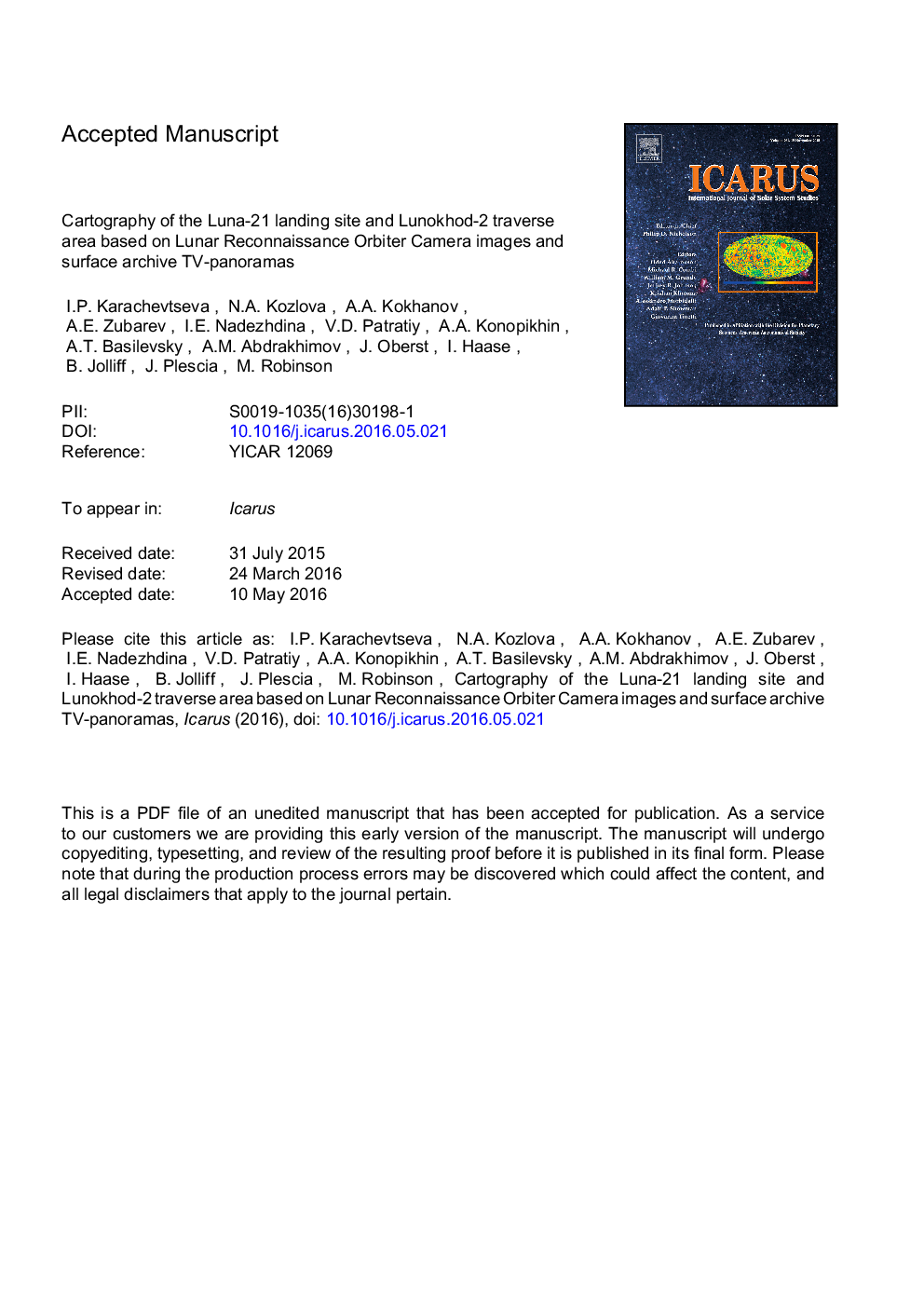| Article ID | Journal | Published Year | Pages | File Type |
|---|---|---|---|---|
| 5487258 | Icarus | 2017 | 35 Pages |
Abstract
The Lunar Reconnaissance Orbiter Camera (LROC) system consists of a Wide Angle Camera (WAC) and Narrow Angle Camera (NAC). NAC images (â¼0.5 to 1.7 m/pixel) reveal details of the Luna-21 landing site and Lunokhod-2 traverse area. We derived a Digital Elevation Model (DEM) and an orthomosaic for the study region using photogrammetric stereo processing techniques with NAC images. The DEM and mosaic allowed us to analyze the topography and morphology of the landing site area and to map the Lunokhod-2 rover route. The total range of topographic elevation along the traverse was found to be less than 144 m; and the rover encountered slopes of up to 20°. With the orthomosaic tied to the lunar reference frame, we derived coordinates of the Lunokhod-2 landing module and overnight stop points. We identified the exact rover route by following its tracks and determined its total length as 39.16 km, more than was estimated during the mission (37 km), which until recently was a distance record for planetary robotic rovers held for more than 40 years.
Keywords
Related Topics
Physical Sciences and Engineering
Earth and Planetary Sciences
Space and Planetary Science
Authors
I.P. Karachevtseva, N.A. Kozlova, A.A. Kokhanov, A.E. Zubarev, I.E. Nadezhdina, V.D. Patratiy, A.A. Konopikhin, A.T. Basilevsky, A.M. Abdrakhimov, J. Oberst, I. Haase, B.L. Jolliff, J.B. Plescia, M.S. Robinson,
